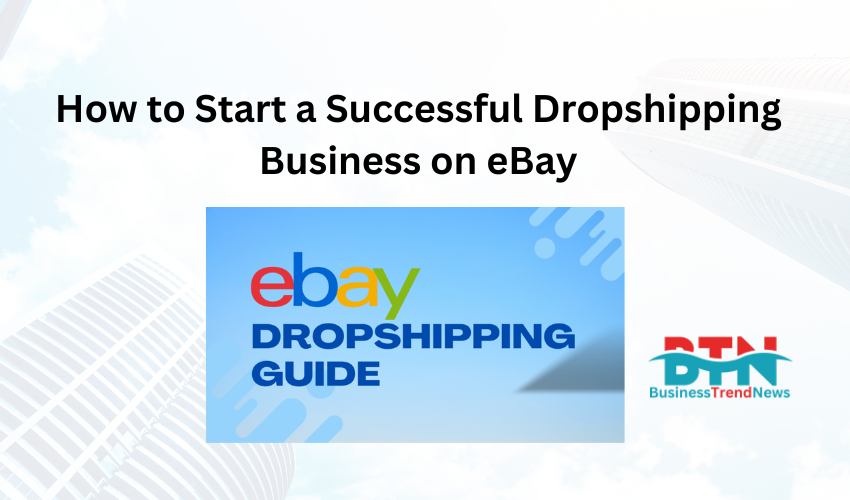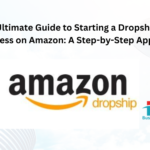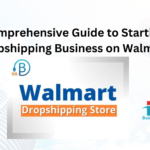![]()
Introduction to eBay Dropshipping
Dropshipping has become an increasingly popular business model for aspiring entrepreneurs due to its low start-up costs and the ability to run a business without holding inventory. eBay, one of the largest online marketplaces, offers a fantastic platform for dropshipping, allowing sellers to reach millions of potential customers globally. In this guide, we’ll explore the ins and outs of starting and growing a successful dropshipping business on eBay.
What is Dropshipping?
Dropshipping is a retail fulfillment method where the seller doesn’t keep products in stock. Instead, when an order is placed, the seller purchases the item from a third party, typically a wholesaler or manufacturer, who then ships the product directly to the customer. This means you, as the dropshipper, don’t need to handle the product physically.
Why Choose eBay for Dropshipping?
eBay offers several advantages for dropshipping:
- Large Customer Base: eBay has over 180 million active buyers, providing a vast potential audience for your products.
- Global Reach: eBay operates in over 100 countries, allowing you to sell internationally.
- Trustworthy Platform: As an established marketplace, eBay provides a level of trust that can help attract customers who might be wary of buying from lesser-known websites.
Step 1: Setting Up Your eBay Seller Account
Before you can start dropshipping on eBay, you’ll need to set up an eBay seller account. Here’s how:
- Create an eBay Account: If you don’t already have one, sign up for a free eBay account. You can choose to register as an individual or a business.
- Upgrade to a Seller Account: After creating your account, you’ll need to upgrade it to a seller account. This will allow you to list items for sale.
- Set Up Payment Methods: eBay requires you to set up a payment method, typically PayPal or direct deposit, to receive payments from buyers.
- Complete Your Profile: Make sure to fill out your seller profile completely, including a professional logo and detailed information about your business. This helps build trust with potential buyers.
Step 2: Choosing a Niche
Selecting a niche is crucial in dropshipping, as it defines the type of products you will sell and your target audience. Here are some tips for choosing the right niche:
- Passion and Interest: Choose a niche that you are passionate about or have some interest in. This will make it easier to stay motivated and informed about trends in that area.
- Market Demand: Use tools like eBay’s Best Sellers page, Google Trends, or other market research tools to identify niches with high demand but low competition.
- Profit Margins: Look for products that offer a decent profit margin after accounting for the cost of goods, eBay fees, and shipping costs.
Step 3: Finding Reliable Suppliers
The success of your dropshipping business largely depends on the quality and reliability of your suppliers. Here’s how to find the right ones:
- Use Established Dropshipping Platforms: Websites like AliExpress, SaleHoo, and Oberlo offer a wide range of products suitable for dropshipping, with many suppliers experienced in the dropshipping model.
- Direct Contact: Reach out to manufacturers or wholesalers directly. Some may not advertise dropshipping services but may be willing to work with you if approached.
- Evaluate Supplier Reliability: Check reviews, order samples, and assess the communication responsiveness of suppliers before partnering with them.
Step 4: Listing Products on eBay
Once you have chosen your niche and found reliable suppliers, it’s time to list your products on eBay. Here’s how to do it effectively:
- Create a Compelling Title: Your product title should be clear, concise, and include relevant keywords. For example, instead of “Phone Case,” use “iPhone 12 Pro Max Shockproof Case with Screen Protector.”
- Write Detailed Descriptions: Provide a detailed product description that includes all relevant information, such as size, material, color, and features. Highlight the benefits of the product and how it solves a problem or fulfills a need.
- Use High-Quality Images: eBay allows you to upload multiple images for each listing. Use high-quality photos that show the product from different angles. If possible, include images that show the product in use.
- Set Competitive Pricing: Research your competition and set a competitive price. Remember to factor in eBay fees, PayPal fees, and shipping costs to ensure you’re still making a profit.
- Optimize for eBay’s Search Algorithm: eBay’s search algorithm, Cassini, favors listings that are well-optimized. Use relevant keywords in your title, description, and product tags to improve your listing’s visibility.
Step 5: Managing Orders and Customer Service
Effective order management and customer service are key to maintaining a successful dropshipping business on eBay. Here’s how to manage these aspects:
- Order Fulfillment: Once you receive an order, immediately purchase the item from your supplier and provide them with the customer’s shipping details. Ensure that the supplier ships the product promptly to avoid delays.
- Tracking Information: Always provide tracking information to your customers. This builds trust and reduces the likelihood of disputes.
- Customer Support: Be responsive to customer inquiries and resolve any issues quickly. Positive feedback and high seller ratings are crucial for long-term success on eBay.
Step 6: Handling Returns and Refunds
Returns and refunds are a part of any retail business, including dropshipping. Here’s how to handle them on eBay:
- Return Policy: Clearly state your return policy on each listing. A standard return period is 30 days, but this can vary depending on the product type and supplier policies.
- Communicate with the Supplier: If a customer requests a return, contact your supplier to arrange the return or refund. Some suppliers may allow you to return the item, while others may issue a refund without requiring the return.
- Refund Process: If the supplier issues a refund, process the refund to your customer through eBay. Ensure that the customer is informed throughout the process to maintain trust.
Step 7: Marketing Your eBay Store
To drive traffic and sales, you need to market your eBay store effectively. Here are some strategies:
- eBay Promotions: Use eBay’s built-in promotional tools to offer discounts, bundle deals, or free shipping. These can attract more buyers and increase sales.
- Social Media Marketing: Promote your eBay listings on social media platforms like Facebook, Instagram, and Pinterest. Create engaging posts and ads that link directly to your eBay store.
- Content Marketing: Start a blog or create videos related to your niche and include links to your eBay listings. This can help drive organic traffic and establish your brand as an authority in the niche.
- Email Marketing: Collect emails from customers and send them regular newsletters featuring new products, special offers, and updates about your store.
Step 8: Scaling Your Dropshipping Business
Once your eBay dropshipping business is up and running, you can focus on scaling it. Here’s how:
- Expand Your Product Range: Continuously add new products to your store. Use your sales data to identify bestsellers and find similar products to expand your offerings.
- Automate Processes: Use dropshipping automation tools like DSM Tool, AutoDS, or InkFrog to streamline product listing, order processing, and inventory management. Automation can save you time and reduce the risk of errors.
- Diversify Suppliers: Don’t rely on a single supplier. Build relationships with multiple suppliers to ensure a consistent supply chain and mitigate risks if one supplier experiences delays or stock issues.
- International Shipping: Consider offering international shipping to reach a broader audience. eBay makes it easy to list items for international sale, but ensure you understand the shipping costs, customs regulations, and delivery times for different countries.
Common Challenges and How to Overcome Them
While dropshipping on eBay is an excellent business model, it’s not without challenges. Here are some common issues and tips on how to overcome them:
- Supplier Issues: Delays, out-of-stock products, or poor quality from suppliers can harm your business. Always vet suppliers carefully and have backup options in place.
- Competition: eBay is a competitive marketplace, and pricing wars can erode your margins. Focus on offering exceptional customer service, unique products, or value-added bundles to stand out.
- Negative Feedback: Negative feedback can impact your seller rating and visibility on eBay. Always strive for high-quality service, and if issues arise, address them quickly and professionally.
- eBay Policy Compliance: eBay has strict policies regarding dropshipping, and violating them can result in account suspension. Ensure you’re familiar with eBay’s dropshipping policy and operate within their guidelines.
Conclusion
Starting a dropshipping business on eBay is a viable way to enter the world of e-commerce with minimal upfront investment. By carefully selecting a niche, finding reliable suppliers, and optimizing your listings, you can build a profitable online business. Remember, success in dropshipping doesn’t happen overnight. It requires continuous learning, adaptation, and a focus on providing value to your customers. With dedication and the right strategies, you can turn your eBay dropshipping business into a significant source of income.



